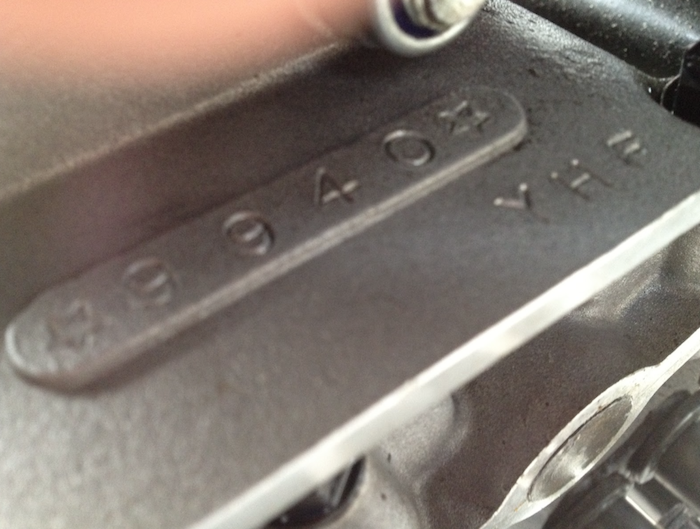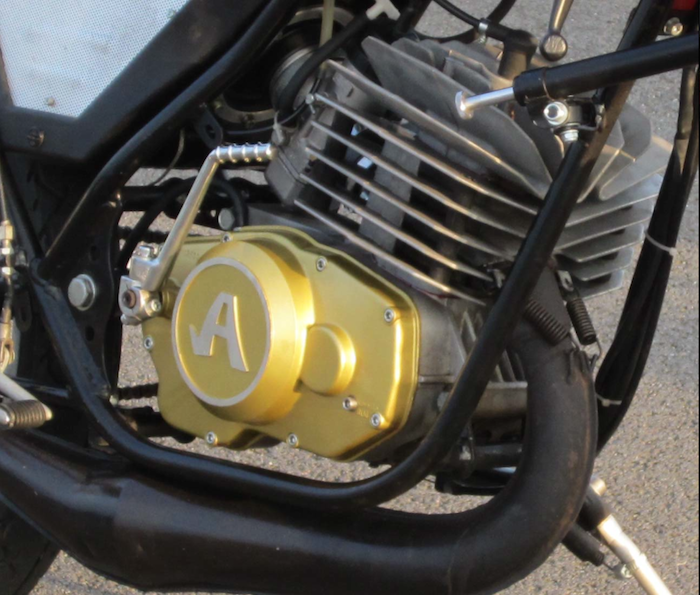125stradali.com ringrazia l’amico Stefano autore di un bellissimo Blog dedicato alle Aspes Juma, Yuma e Criterium e che ha gentilmente collaborato con noi per realizzare un meraviglioso articolo sulle Aspes 125 stradali che tanti ragazzi hanno fatto sognare negli anni 70. Per 125stradali si tratta anche della prima volta che trattiamo una 125 raffreddata ad aria, essendoci specializzati solo sulle anni 80 e 90 raffreddate a liquido. Siamo quindi lieti di aver infranto questa nostra regola, perché la Aspes lo merita davvero.
Fondata a Gallarate sul finire degli anni cinquanta da Teodosio Sorrentino, la denominazione Aspes deriva dall’abbreviazione del cognome (Aspesi) della moglie. L’azienda nasce per la produzione di biciclette, ma dal 1961 inizia la costruzione di ciclomotori utilitari di stampo classico come il Falco. Rapidamente la gamma viene ampliata per l’utenza giovanile con i modelli Sport (1964) e Sprint (1966), spinti da un due tempi Minarelli P4. Nel 1967, sulla base del modello turistico viene approntata una versione denominata Cross T (Cross Teodosio) che rappresentòail primo tentativo della Aspes di inserirsi nel segmento delle moto da fuoristrada, in quegli anni particolarmente ambite dai giovani.
Il Cross T ottiene un tiepido successo, sufficiente a spingere l’azienda ad insistere nel progetto e realizzare il modello Cross, sfociando nella produzione prima, del Cross Special ’68” e successivamente del “Cross Special ’69”, che si distinguevano da altri prodotti coevi, per la modernità delle soluzioni adottare e la qualità della componentistica impiegata nella costruzione.
Il 1970 vede la presentazione dell’Apache 125, con cui la Aspes inaugura la tradizione di battezzare i propri modelli con nomi delle tribù degli indiani d’America. La moto si distingue per l’adozione delle forcella Ceriani da competizione, per il forcellone montato su boccole elastiche, per il robusto telaio in acciaio trafilato e motore Maico a disco rotante da 18 CV che ne fanno un veicolo molto competitivo ed usato dai corridori privati. La novità più importante, però, è l’ingresso in azienda di Piermario Sorrentino, primogenito di Teodosio e grande appassionato delle corse di velocità. Dietro sua insistenza, la Aspes avvia la modernizzazione dei ciclomotori stradali, mettendo in produzione il modello Super Sport ed avviando un progetto, piuttosto ambizioso, per la realizzazione di moto da competizione, in grado di ben figurare nel Campionato italiano Juniores di velocità.
Sull’onda dei primi successi sportivi, ottenuti con il modello Cross Special 71 da Felice Agostini (fratello minore del pluricampione iridato Giacomo), la Aspes presenta al Salone di Milano 1971 il Navaho, ciclomotore da cross che ebbe una largo successo tra i giovanissimi, grazie alle sue sovrastrutture spigolose e essenziali (realizzate in fibra di vetro) verniciate in brillanti colori metallizzati. Nella stessa esposizione, fa bella mostra di sé il prototipo da pista 125 Juniores Velocità che montava il primo motore Aspes, progettato e realizzato dal noto tecnico Gianfranco Maestroni, strappato alla Yamaha Italia.
Alcuni prototipi del nuovo motore vengono montati anche su telai Apache e, dopo lunghe fasi di studio e collaudo, la Aspes decide di produrre le motorizzazioni 125 cm³ in proprio, fondando l’associata ASCO (acronimo di Aspesi Consiglio) che incorpora l’officina meccanica dell’ing. Vito Consiglio di San Martino Siccomario, artefice del processo di sviluppo e industrializzazione.
Il 1972 vede l’ingresso sul mercato della Hopi 125, erede dell’Apache. Contrariamente alla maggioranza dei costruttori del settore, la Aspes decise di non impiegare il motore Sachs, ma di costruire in proprio il motore. La Hopi ottiene un certo successo nel Cross, mentre nella Regolarità sconta un motore poco trattabile.
Nel 1973 la Casa di Gallarate presenta, al Salone di Milano, la Juma, una 125 stradale con il motore derivato da quello dell’Hopi. La moto entrerà in produzione dal 1974, ottenendo un buon successo in Francia, dove sotto le insegne dell’importatore BPS si dimostrerà imbattibile nelle competizioni per moto di serie. La Juma si dimostrerà la 125 più veloce in commercio (135 km/h di velocità massima).
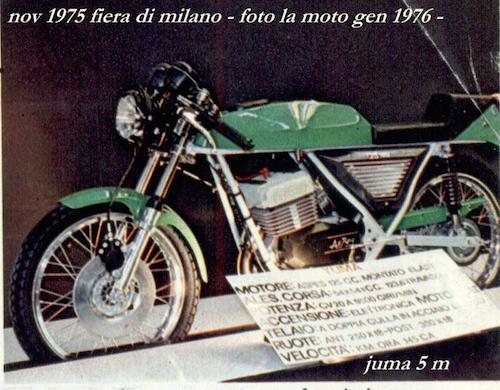
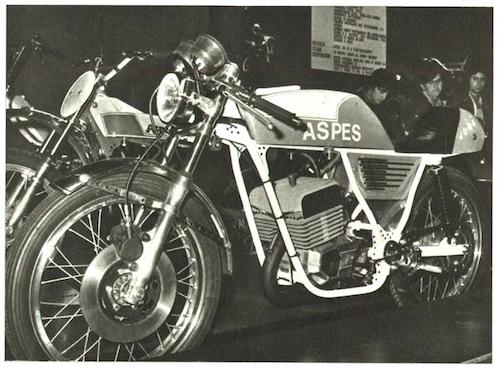
Nel 1977 parte il “Criterium Monomarca Aspes Yuma”, primo esempio di trofeo monomarca in Italia, disputatosi sino al 1979, che darà la possibilità a molti giovani piloti (Loris Reggiani, Fausto Gresini, Maurizio Vitali, Davide Tardozzi e altri) di emergere.
La fine degli anni settanta segna però un declino della Aspes: il Navaho ha da tempo perso la sua originalità stilistica, l’Hopi ha scarso successo (dovuto a un motore più da Cross che da Regolarità), mentre la Yuma è sì la più veloce della sua categoria, ma è anche la più cara. La Casa di Gallarate cerca di tamponare la situazione proponendo ciclomotori di stampo tradizionale (il “Sioux”) e una 125 meno spinta della Yuma (la “Yuma TSB”), entrambi di scarsissimo successo.
L’avventura della Aspes termina nel 1982, quando la Unimoto (nata a Cesena nel 1980 dalle ceneri della Milani) assorbì la Casa di Gallarate, utilizzando il Marchio Aspes sino al 1984 prima di cessare anch’essa l’attività nel 1986.
1976/1978 – Aspes Juma 125
L’idea di una 125 cc stradale nasce in Aspes all’inizio degli anni settanta, grazie a Piermario Sorrentino, figlio del titolare della Casa di Gallarate. Insieme a Gianfranco Maestroni, tecnico in forza all’Aspes, crea nel 1971 una moto da competizione unendo un telaio in tubi al Cr-Mo a un motore preso da una Hopi da motocross, collaudata da Felice Agostini.
Il progetto viene momentaneamente accantonato, per essere ripreso poco tempo dopo: in Aspes, infatti, ci si rende conto che sul mercato – dominato allora dal fenomeno delle moto da Regolarità – non è disponibile una 125 sportiva. Altro fattore che spinge verso la realizzazione della moto è la richiesta della francese BPS di un modello che si presti alle competizioni per moto di serie, molto in voga Oltralpe. Il risultato finale viene presentato al Salone di Milano 1973, e la produzione parte per il mercato transalpino l’anno successivo, sotto il nome di BPS. In Italia la commercializzazione parte solo nel 1976.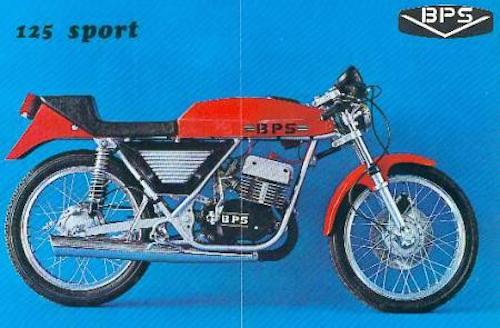
La Juma si presenta con una linea sportiva e aggressiva, alla quale contribuiscono la sella monoposto, i due semimanubri, le pedane arretrate ed il serbatoio allungato con mentoniera di protezione per il pilota per sdraiarsi sulla serbatoio. Dotazione unica per la categoria, l’ammortizzatore di sterzo sotto alla piastra inferiore della forcella. Il tutto abbellito da una serie di lavorazioni e dotazione di minuteria più vicine a una moto artigianale che non a un prodotto industriale: nel particolare si nota l’alluminio usato per la plancia strumenti, le pedane sportive ed i dadi autobloccanti usati usati un pò dappertuttto. La Juma è anche leggera, pesando circa 95 kg.
Il motore (monocilindrico a due tempi) ha caratteristiche da moto da competizione: “vuoto” sotto i 5.000 giri/min, dà il suo meglio a partire da 7.500 giri, potendo toccare gli 11.000, e spinge la Juma a oltre 130 km/h. Dotato di accensione elettronica e cambio a sei marce (a cinque marce sulla primissima serie con i cerchi a raggi), il motore Juma viene alimentato da un carburatore Dell’Orto PHBE 32 BS. (da 30mm sulle primissima serie a 5 marce).
La tenuta di strada dell’Aspes è ottima grazie al valido telaio doppia culla chiusa in tubi di acciaio, alle sospensioni che vedono all’anteriore una forcella Samfis da 32 mm (in sostanza una Ceriani) ed al posteriore due ammortizzatori Marzocchi regolabili su 5 posizioni, ed ai freni con all’anteriore un valido disco Grimeca da 260 mm ed al posteriore un onesto tamburo da 160 mm al posteriore. Le ruote sono entrambe da 18″.
I punti deboli della 125 gallaratese sono le vibrazioni eccessive, il consumo elevato ed il prezzo di ben Lire 1.085.000. Basti pensare che nel 1976 la Malanca E2C Sport bicilindrica era quotata Lire 909.400 e la Zündapp KS 125 Lire 780.000.
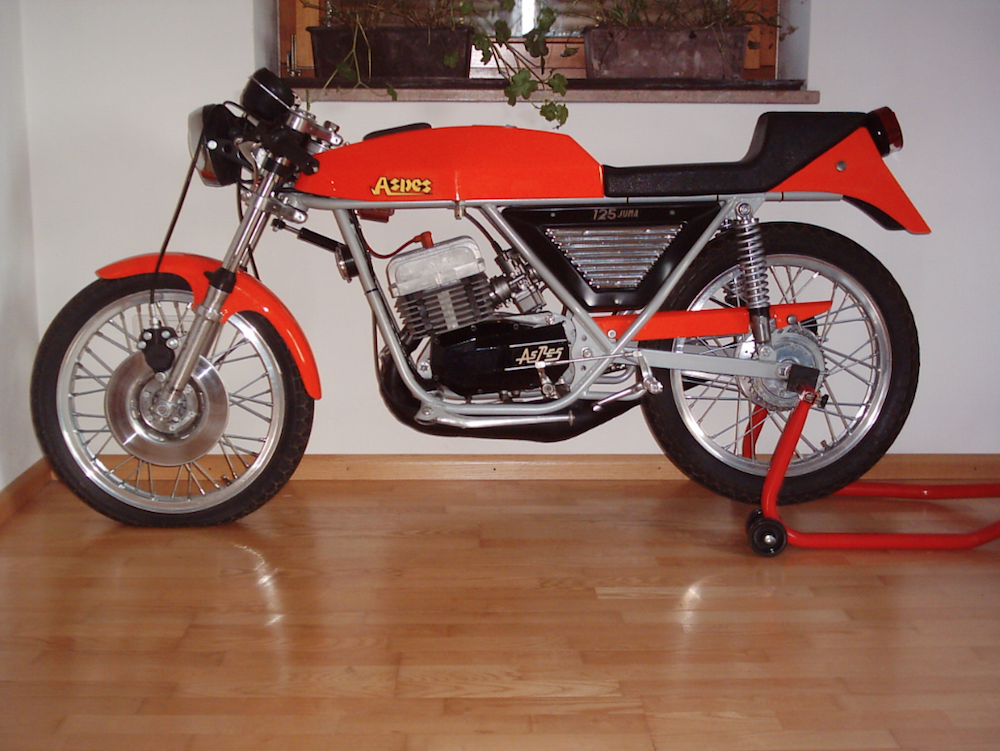
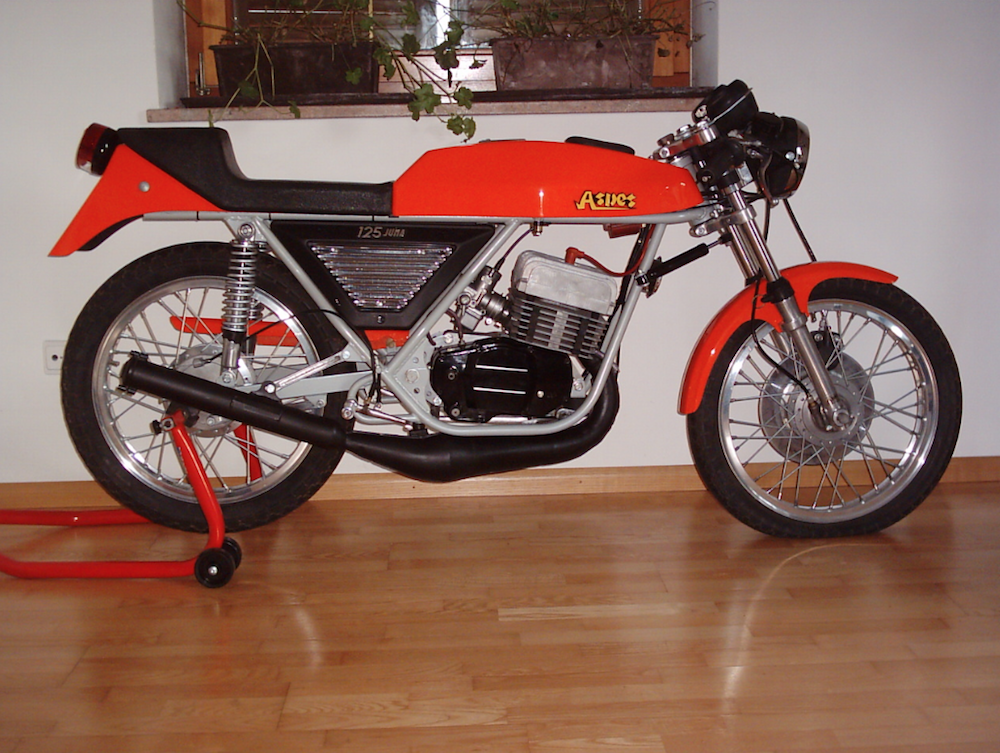
Nel corso della produzione, la Juma viene poi aggiornata con nuovi cerchi Grimeca in lega leggera a 7 razze ed il motore vede i carter verniciati in color oro.
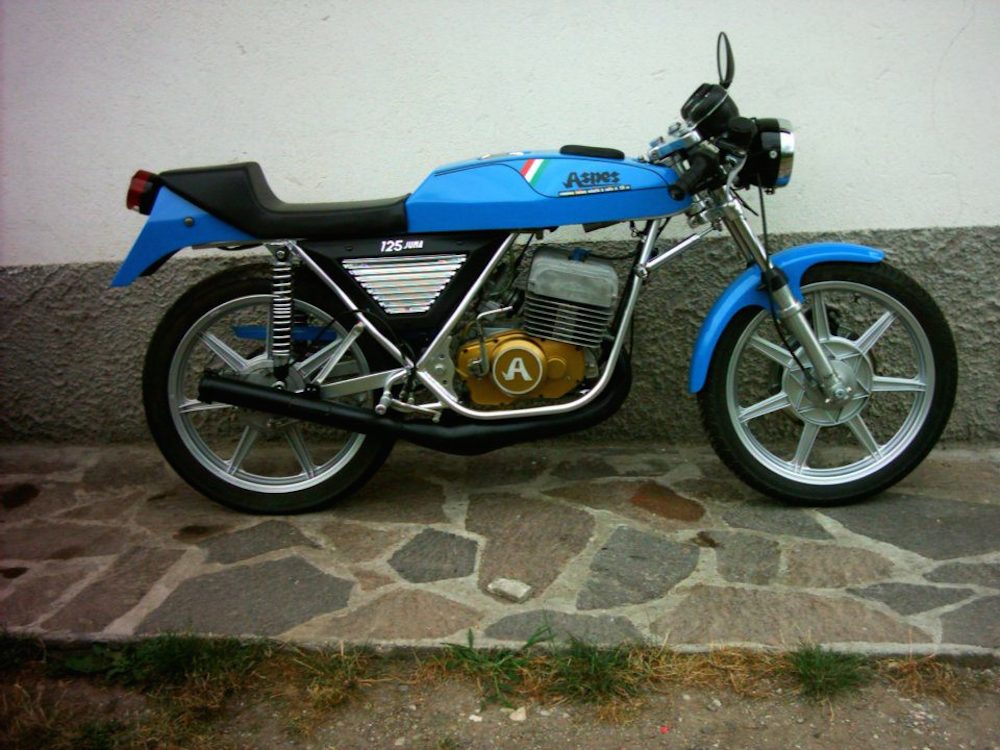
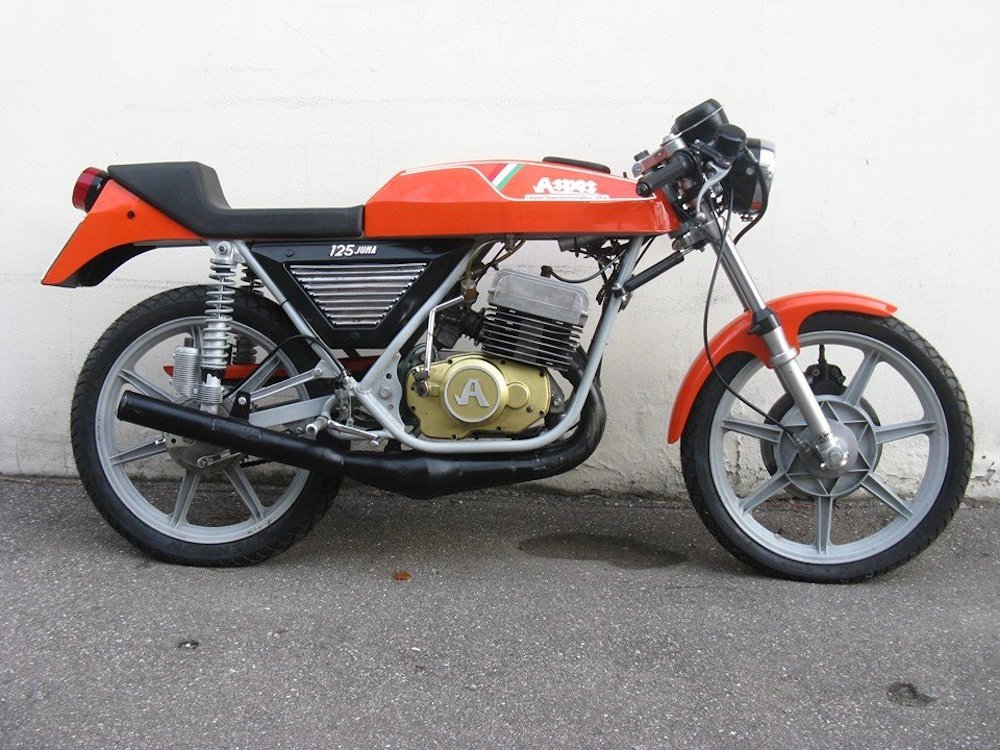
1979/1982 – Aspes Yuma 125
Nel 1979 la Juma si cambia il nome in Yuma e adotta un nuovo telaio che permette il montaggio di una nuova sovrastruttura singola in fibra di vetro che ingloba serbatoio, fianchetti e codone e che le da il soprannome di “monoscocca”. A richiesta è possibile montare un cupolino. Resta comunque disponibile, a richiesta, il precedente allestimento.
Nel corso della produzione, dopo il 1980, la Yuma guadagna aggiornamenti di produzione con una monoscocca con serbatoio separato ed un nuovo motore dotato di una termica differente (sperimentata sulle Hopi da Cross) caratterizzata da un cilindro con alettatura di raffreddamento radiale che le fa toccare i 20 CV reali a 10.000 giri/min, portandola a sfiorare i 140 km/h e confermandosi quindi come 125 stradale più veloce (e costosa) sul mercato. I carter motore ora sono grigi.
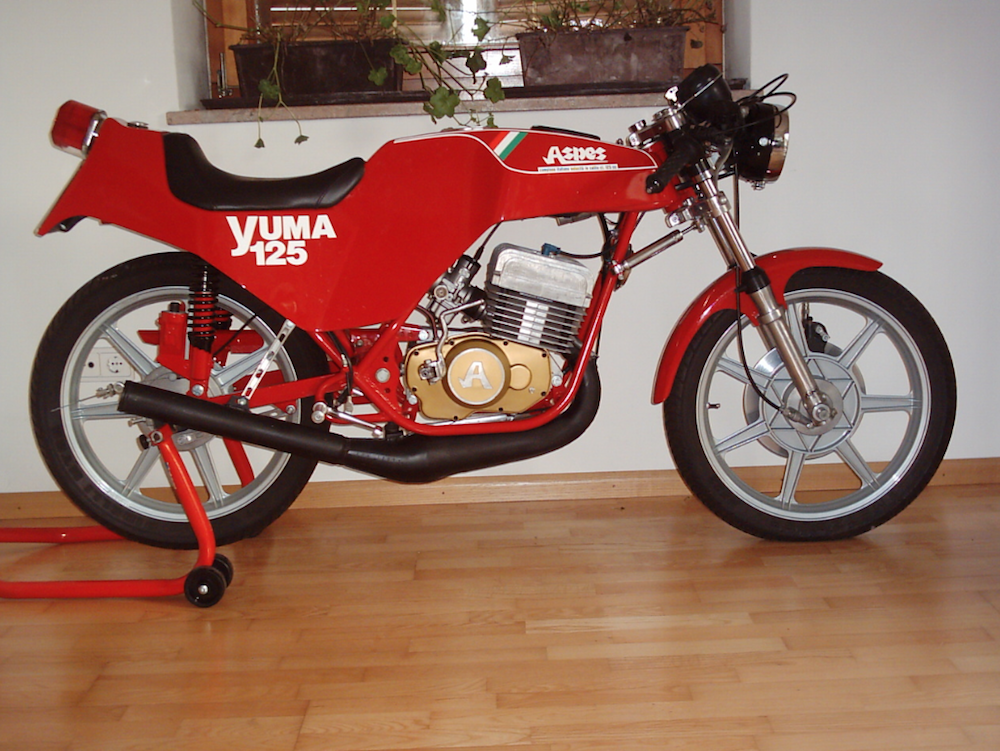
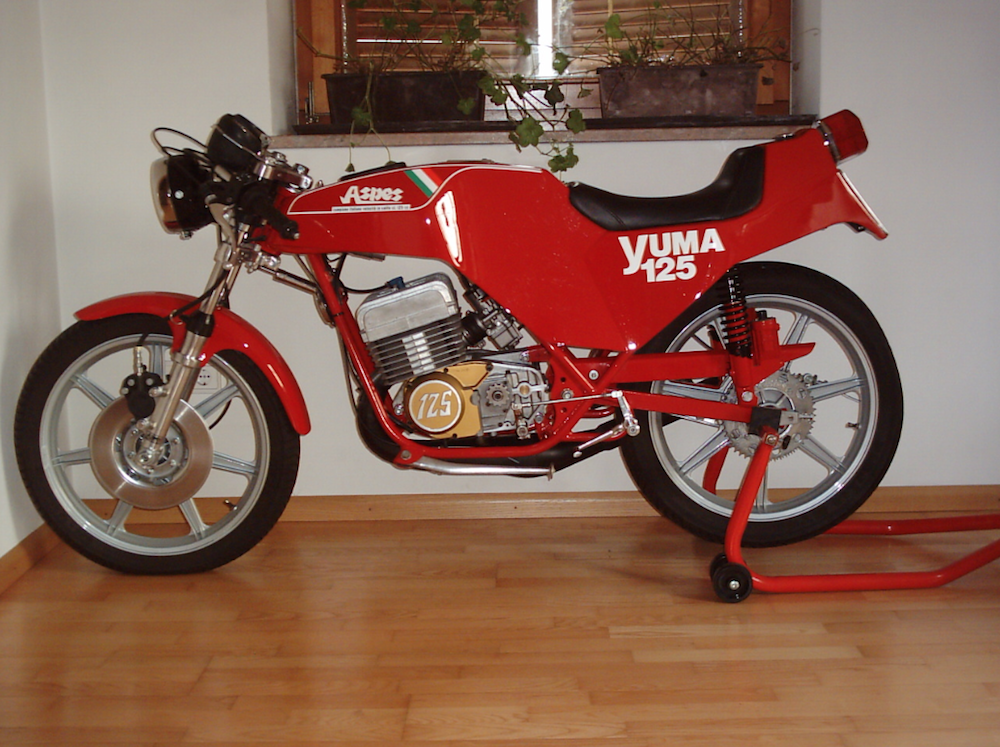
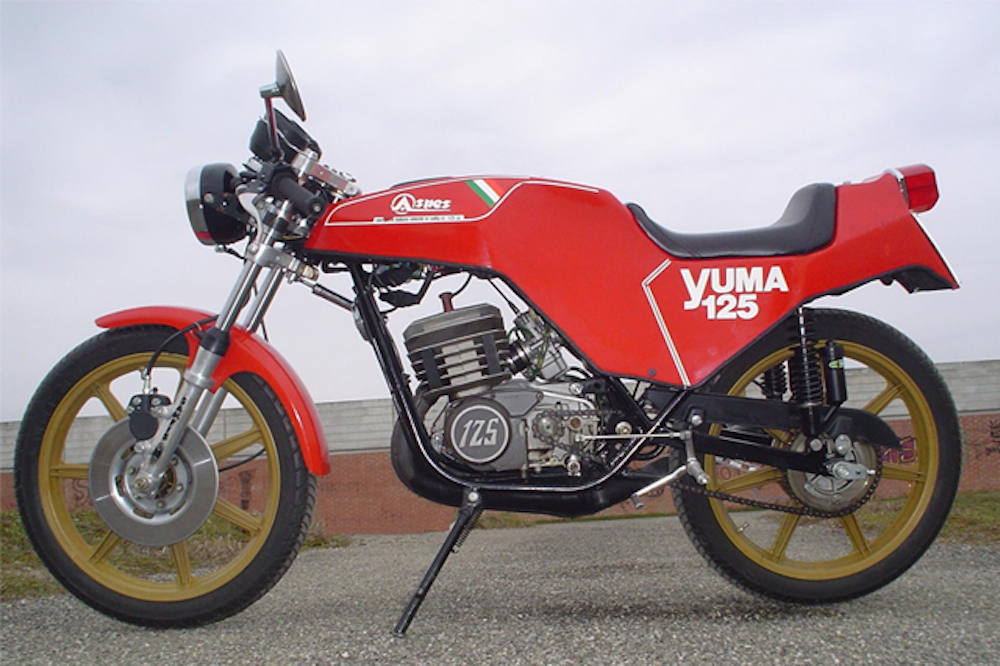
Per tentare di risollevare una situazione aziendale sempre più traballante l’Aspes presenta al Salone di Milano 1979 una versione più tranquilla ed economica della Yuma, la Yuma ts.b, spinta da un motore derivato da un Minarelli da kart. Commercializzata dal 1981, la “ts.b” (o “TSB”) non riesce ad accattivare i potenziali acquirenti, contribuendo ad accelerare la chiusura dell’Aspes, assorbita nel 1982 dalla Unimoto, azienda romagnola nata dalle ceneri della Milani.
Le differenze tra ciclistica Juma e Yuma.
La Juma adotta il cosiddetto “telaio stretto” perché nella parte superiore sotto il serbatoio e sotto il codino ha la medesima larghezza. I supporti motore sono di tipo elastico; frontale con silentblock e posteriore ancorato con un supporto al perno del forcellone. Di questi telai esistono due varianti: con mono silentblock anteriore nei primi modelli e doppio silent block negli ultimi. Anche l’attacco al telaio della staffa che regge la marmitta, durante la produzione, subisce variazioni nella sua collocazione dove si aggancia al telaio.
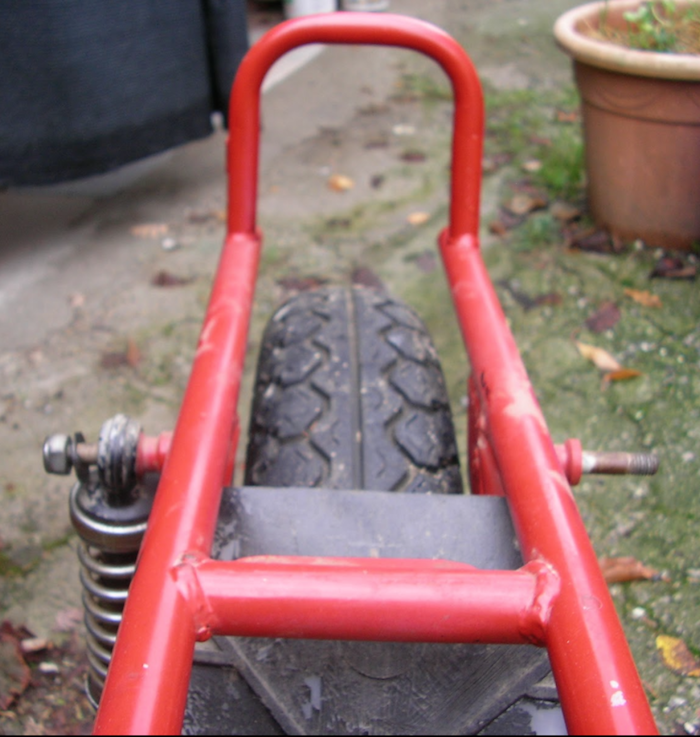
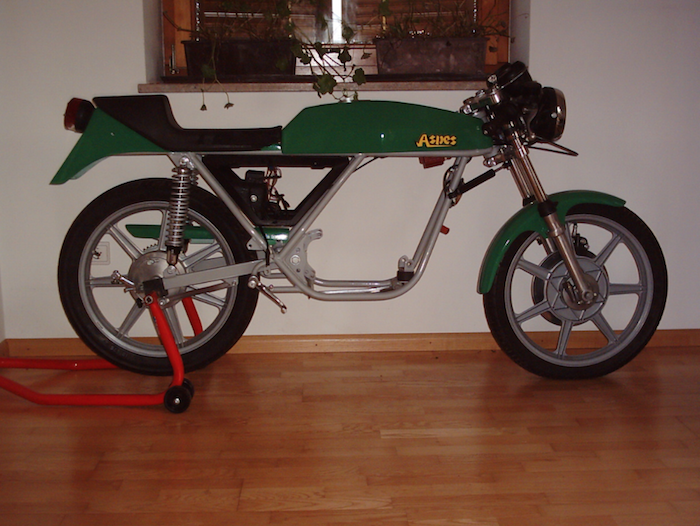
Il telaio sulla successiva Yuma monoscocca subisce variazioni in larghezza sotto la seduta del codino, anche se gli attacchi delle sospensioni posteriori rimangono nella loro posizione, e aumenta l’archetto finale sotto il codino anche per accogliere la nuova configurazione della scocca (monoscocca); nei triangoli laterali del telaio, dove nello Juma veniva alloggiata la cassa filtro, ora ci sono due staffe traverse dove viene avvitata la monoscocca, mentre una nuova scatola filtro aria ridotta e il supporto batteria trovano collocazione internamente..
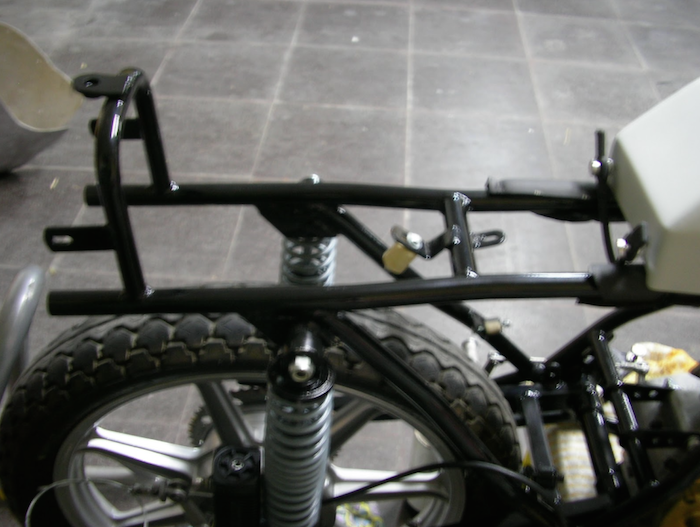
La variazione più importante riguarda i supporti motore che non sono più elastici, ma rigidi. Ora anteriormente vi sono due staffe che tengono il motore ancorato al telaio e posteriormente il motore non è più ancorato al perno del forcellone, ma sempre al telaio.
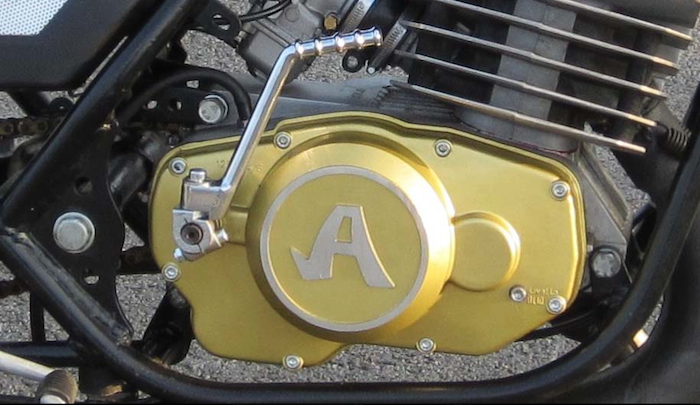
Esistono due varianti che riguardano la posizione del cavalletto laterale nelle prime versioni monoscocca più avanti nella culla del telaio con cavalletto in alluminio e successivamente più arretrato con cavalletto in ferro. Come tipico della produzione italiana del periodo, esistono versioni intermedie prodotte a cavallo tra una serie e l’altra, dove si vedono delle interessanti combinazioni tra un serie e l’altra, come ad esempio delle “telaio stretto” ma con i supporti motori rigidi.
Le differenze tra i motori
I motori Juma e Yuma montano un blocco motore marchiato SP, che significa strada-pista (sulle Cross-Regolarità è marchiato CR). Difatti, tale motore viene anche usato nel trofeo Criterium 77-79. Il motore SP monta una termica detta “testa quadra”, per via della forma del gruppo termico che in fase di progetto riceve un forte sovradimensionamento delle alette di raffreddamento. Il cilindro ha quattro travasi.
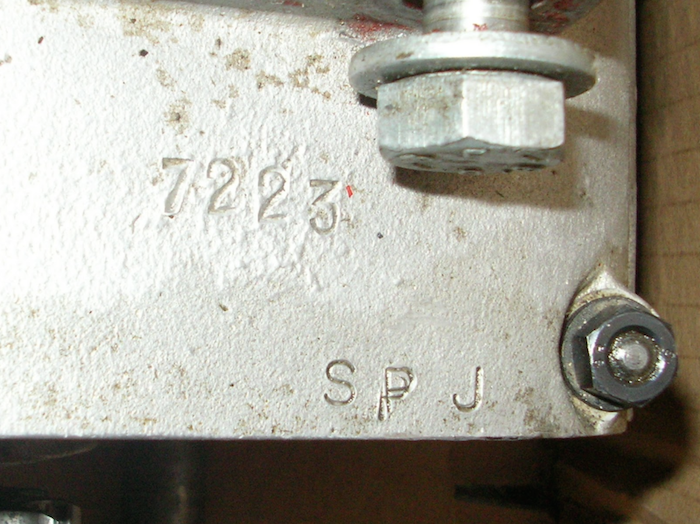
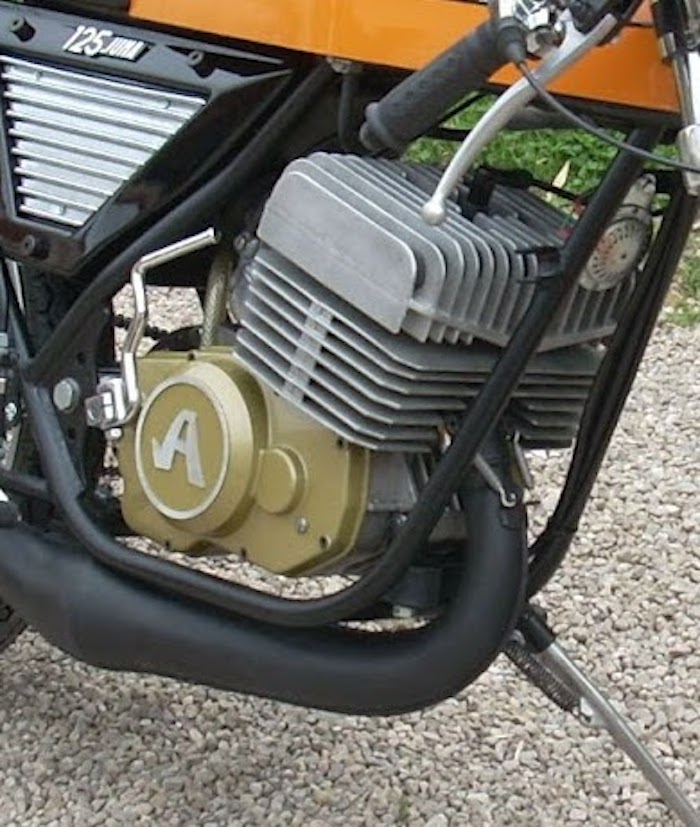
Successivamente, già a produzione Yuma monoscocca inoltrata, viene utilizzato un nuovo blocco motore Marchiato YHF con i carter a livello dell’albero motore diversi. Nuova anche la termica che ora adotta un cilindro con alette di raffreddamento radiali, con cinque travasi e con un diagramma di distribuzione più spinto che aumenta la potenza rispetto al precedente cilindro. Sulle ultime serie i carter motore diventano di color grigio.
